Sorry, we don't have any places yet
Explore more places related to this search:
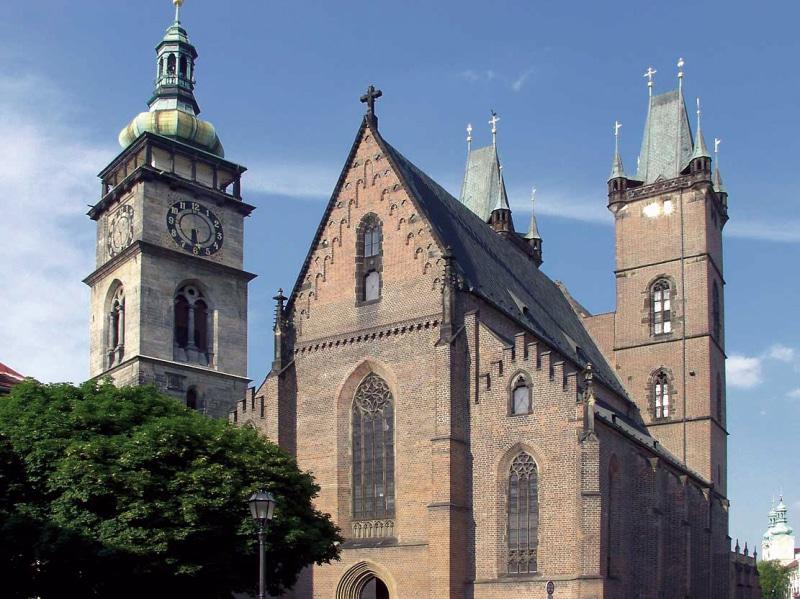
Removed from Unnamed collection
Cathedral of the Holy Spirit 
The gothic brick building of the Church of the Holy Spirit ranks among the major historic sights of the town. It was established by Queen Eliška Rejčka in 1307. In 1424, Jan Žižka of Trocnov, major military leader of the Hussite movement, was temporarily buried here. http://www.kralovehradecko-info.cz/en/atraktivity/hradec-kralove/prochazkovy-okruh-1.php
Map
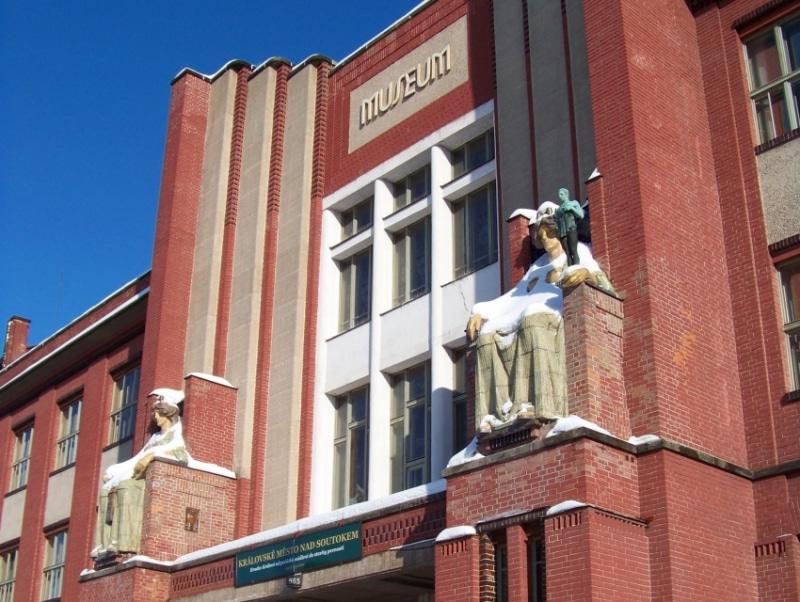
Removed from Unnamed collection
The East Bohemian Museum 
The East Bohemian Museum of Hradec Králové is considered to be one of the city's most important architectural landmarks, designed by the famous Czech architect, Jan Kotěra. https://eventseeker.com/venue/893250-east-bohemian-museum-hradec-kr%C3%A1lov%C3%A9
Map

Removed from Unnamed collection
Hradek u Nechanic Castle 
Near the Hrádek village, the Hrádek u Nechanic Castle was built between 1839 and 1857 on so-called Lubenský hill. It was built as a prestige summer residence of the county family of Harrach by František Arnošt, the count of Harrach, an important representative of the Jilemnice family line. http://www.kralovehradecko-info.cz/en/atraktivity/hradek/hradek-u-nechanic.php
Map
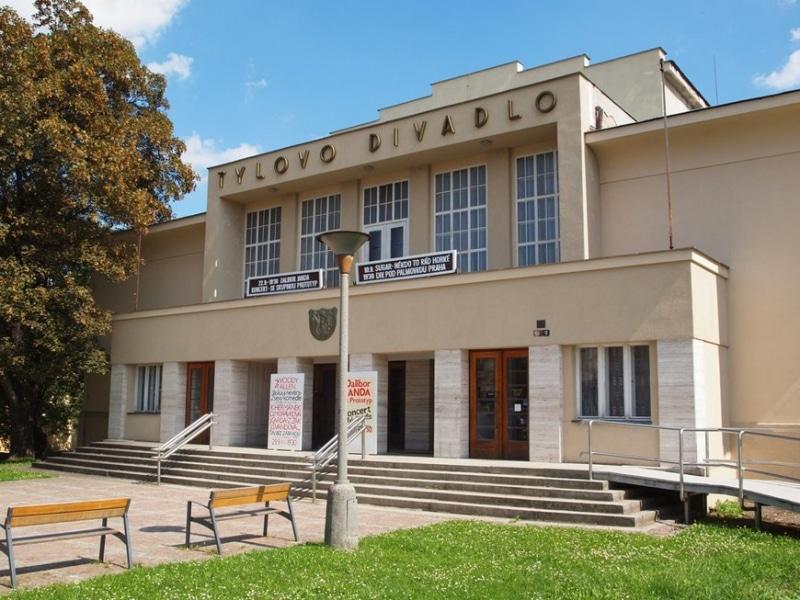
Removed from Unnamed collection
Kutna Hora Tyl Municipal Theatre 
This historical building is, as its name suggests, associated with Josef Kajetán Tyl, an important figure of Czech theatre and the National Revival movement. J. K. Tyl, a native of Kutná Hora, was the first person to publicly formulate the idea to build an independent theatre in Kutná Hora for the then Tyl Amateur Theatre Company, which was based in Kutná Hora and of which Tyl was himself a member. http://destinace.kutnahora.cz/d/kutna-hora-tyl-municipal-theatre
Map

Removed from Unnamed collection
Dacicky House 
Dačický House, located on a sloping square in sight of the Stone Fountain, is a unique exhibit in itself. At its core is a pre-Hussite house, which was generously reconstructed after 1500 for the Utraquist bishop Filip de Villanuova, and was the birthplace of the chronicler Mikuláš Dačický of Heslov in the mid-16th century. http://destinace.kutnahora.cz/d/dacicky-house-interactive-exposition-about-kutna-hora-and
Map
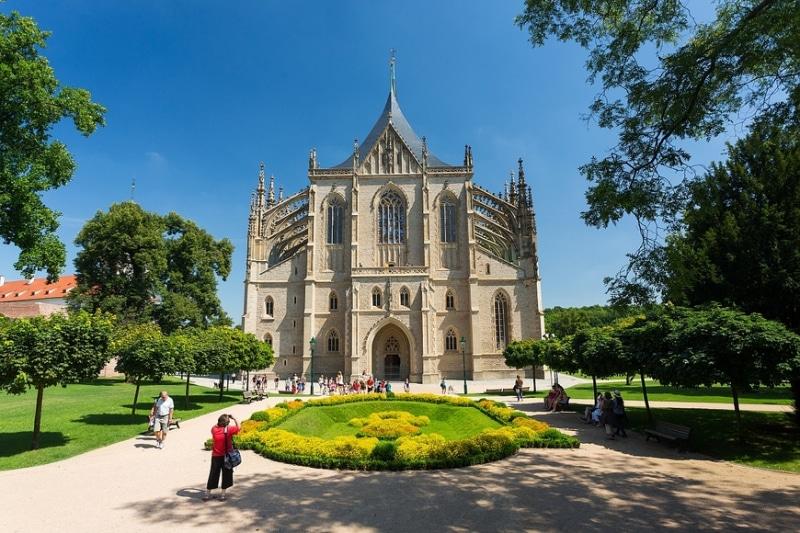
Removed from Unnamed collection
The Cathedral of St Barbara 
The Cathedral of St Barbara, a jewel of the Late Gothic period and one of the four cathedral-type buildings in Bohemia, was incribed on the UNESCO World Heritage List together with the Cathedral of the Assumption of Our Lady and St John the Baptist and the historical centre of Kutná Hora. http://destinace.kutnahora.cz/d/cathedral-of-st-barbara
Map

Removed from Unnamed collection
Rostejn Castle 
Castle was built in the first half of the 14th century. In the 1570s Zacharias of Hradec carried out a major reconstruction and ordered two enclosures for deer nearby. From 17th century to beginning of the 20th century it was used as a hunting castle. http://www.telc.eu/tourist_attractions/rostejn_castle
Map

Removed from Unnamed collection
Galery and Spa Theatre 
Before the theatre had even been erected Cieplice were the venue for numerous plays, however, this form of entertainment began to flourish with the construction of the theatre building designed by Alberta Tolberga. http://en.jeleniagora.pl/content/galery-and-spa-theatre
Map
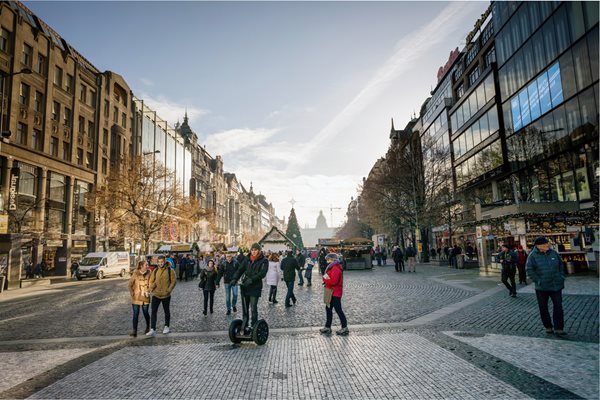
Removed from Unnamed collection
Wenceslas Square 
The city square in the centre of Prague is a traditional venue for celebrations, demonstrations, and public gatherings. It was witness to many historic moments. It is also the second-largest square in the entire Czech Republic, and is a gathering place for Prague residents. When you say, "Let's meet at the horse," everyone knows that the meetup place is the equestrian statue of the patron saint of the Czech lands: the statue of St Wenceslas, which reigns over the entire square. http://www.czechtourism.com/c/prague-wenceslas-square/
Map
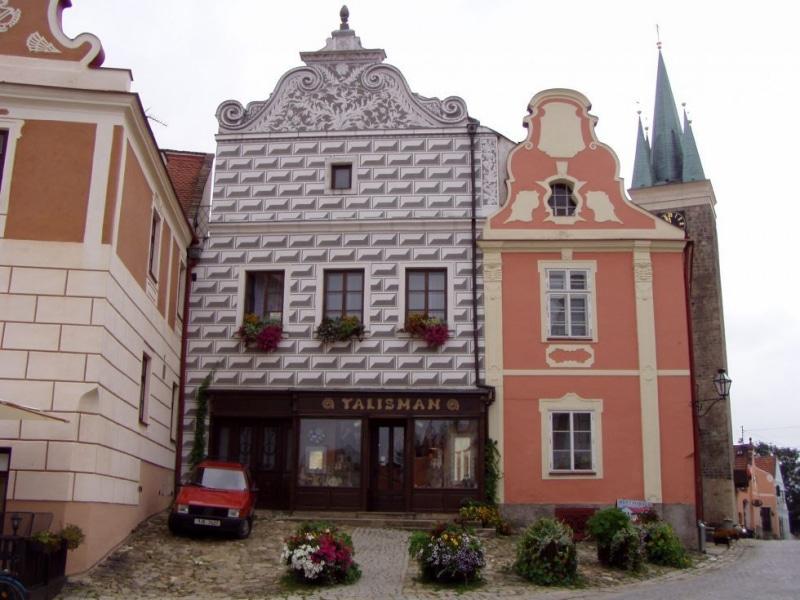
Removed from Unnamed collection
House of Telc 
The Telč´ House on the square of Zacharias from Hradec 31.
The permanent exhibition about history and legends of Telč and surroundings. http://www.telc.eu/tourist_attractions/house_of_telc
Map

Removed from Unnamed collection
The monastery and the Church of St. Jilji 
Just past the gate, we find ourselves next to a set of buildings that make up the Gothic Augustinian Monastery and the Church of St. Jiljí and the Blessed Virgin Mary the Queen. The monastery was founded in 1367 and greatly contributed to the development of education and arts in southern Bohemia. http://www.visittrebon.cz/en/trebon-places-of-interest/21/
Map

Removed from Unnamed collection
Old Town Square 
Where does the true heart of Prague beat? On the Old Town Square of course! It is precisely here that winding lanes of the Old Town run, in order to spill out onto the most beautiful square in Prague. The elegant tower of the Town Hall with the world famous astronomical clock, the proud silhouette of the fairytale Týn Cathedral, the monumental Church of St. Nicholas and countless multicoloured houses of many styles lend this place a unique atmosphere, which will captivate all those who decide to take a look at its charm.
Over the thousand years of its existence, the Old Town Square has been a silent witness to important events in Czech history. History left its mark here in the form of important demonstrations, executions but also weddings, tournaments and political meetings. http://www.czechtourism.com/c/prague-old-town-square/
Map
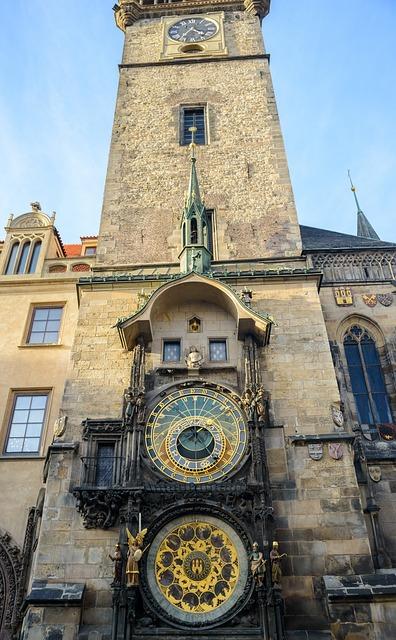
Removed from Unnamed collection
Astronomical Clock 
A fascinating mechanical performance which in the Middle Ages was considered one of the wonders of the world. The Prague Astronomical Clock, which for 600 years has been one of the greatest treasures of the city, still amazes people with its procession of Apostles, moving statues and visualization of time like no other instrument in the world. http://www.czechtourism.com/c/prague-astronomical-clock/
Map

Removed from Unnamed collection
F. X. Salda Theatre 
In September of 1881 the foundations were laid for a new theatre and the City Theatre was ceremonially opened in September 1883. The building was cosntructed in Neo-Reneissance style. http://www.visitliberec.eu/en/kultura-a-zabava/divadla/?view=min&cat=kultura_a_zabava&detail=1091
Map

Removed from Unnamed collection
Museum of North Bohemia 
In 1895 the Board of Trustees of the Industrial Museum of North Bohemia chose the project of the Viennese architect Friedrich Ohmann for the construction of a new building. The construction took place between 1897-1898 and it was carried out by the Liberec company of Gustav and Ferdinand Miksch based on the realisation plans drawn up by the Berlin studio Griesbach & Dinklage. http://www.visitliberec.eu/en/kultura-a-zabava/muzea-a-galerie/?view=min&cat=kultura_a_zabava&detail=1206
Map
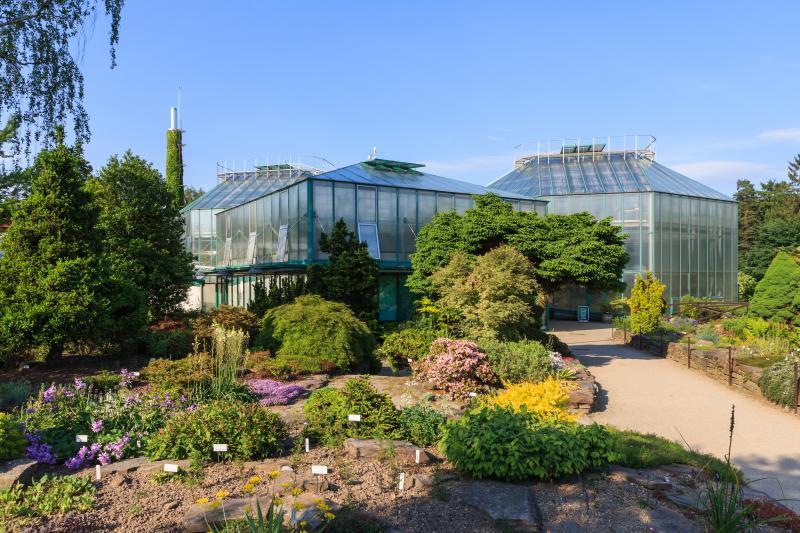
Removed from Unnamed collection
Botanical Gardens 
The Botanical Gardens in Liberec comprise 9 pavilions that offer carnivorous plants, orchids, camellias, ferns, Australian flora, cacti growing upside down, a pavilion with aquariums and vivariums, and many other rare plants. http://www.visitliberec.eu/en/kultura-a-zabava/botanicka-zoo/?view=min&cat=zajimavosti_a_cile&detail=1009
Map
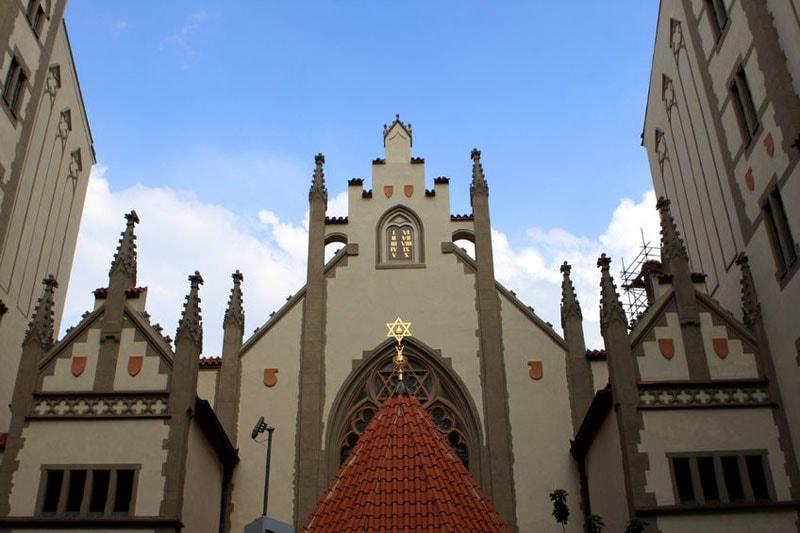
Removed from Unnamed collection
Prague's Jewish Quarter (Ghetto) 
Prague’s Jewish Quarter (“Židovské město” in Czech) is one of the most impressive places in the capital of the Czech Republic. Josefov, as the quarter is officially named, is at the same time beautiful and wrathful, due to its complicated history. It used to be the largest Jewish ghetto in Europe, and its Old Jewish Cemetery is the most remarkable of its kind on the continent.
Many cities used to have – or still have – the so called “Jewish quarters”, where the Jewish minority lived. Apart from Prague, we can for example name Jerusalem, Seville, or New York. Those quarters were quite often in the form of ghettos. The Jewish quarter of Prague, since 1992 listed as a UNESCO World Heritage site, is definitely one of the most significant ones and if you are visiting Prague, you should definitely see it. Not only as a reminder of a tragic part of the world’s history, but also for its undeniable beauty and charm. http://www.praguego.com/attractions/jewish-quarter/
Map
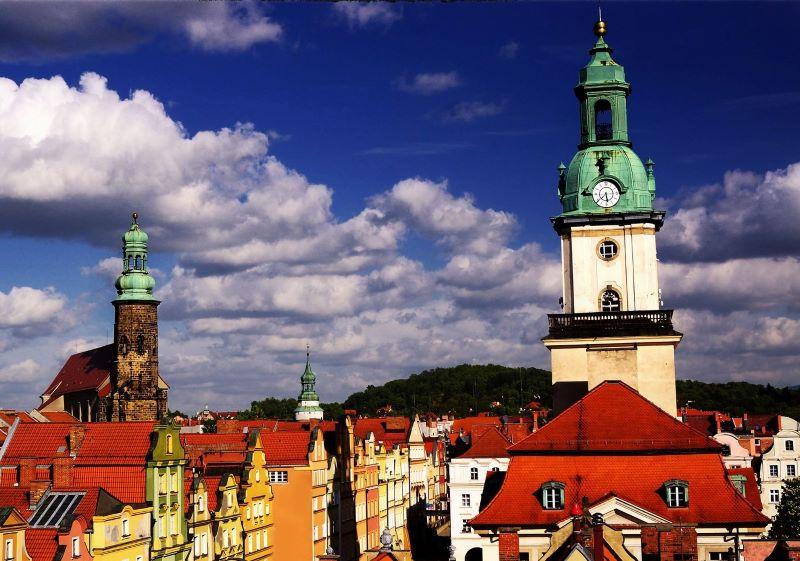
Removed from Unnamed collection
Jelenia Gora Town Hall 
In the central point of the market square there is a building of the town hall. The entire square is surrounded by Baroque tenement houses with arcades, which originally used to serve the merchants to sell their goods. The tenement houses near the market place were settled by the richest citizens – traders, craftsmen, and stallholders – this was evidenced by rich ornaments of the buildings; these were removed in 1960s during a reconstruction of the façades. The arcades were full of drapers’ and furriers’ stalls, bread benches and shambles. http://en.jeleniagora.pl/content/town-hall
Map

Removed from Unnamed collection
Church of Elevation of Holy Cross 
The temple was erected as a proof of grace of the catholic Emperor of Austria for the Silesian evangelicals. Under the arrangement concluded in Altranstädt after a religious war they were granted the right to build six churches in Silesia which at that time was under Austrian rule. http://en.jeleniagora.pl/content/church-elevation-holy-cross
Map

Removed from Unnamed collection
Charles Bridge 
Prague’s oldest bridge was built to replace the Judith Bridge that had been badly damaged by floods in 1342. The Stone, or Prague, Bridge, called Charles Bridge since 1870, was begun in 1357 by Charles IV and was completed in 1402. The bridge is built of sandstone blocks, flanked at each end by fortified towers (Lesser Town Bridge Towers, Old Town Bridge Tower). From 1683 to 1928, 30 statues of saints were carved to decorate the bridge, the most famous of which is the statue of St John of Nepomuk. https://www.prague.eu/en/object/places/93/charles-bridge-karluv-most?back=1
Map

Removed from Unnamed collection
Vrtba Garden 
This terraced Baroque garden in the Italian style is situated on Petřín hill. Although just a few steps away from Lesser Town Square and Charles Bridge, finding it requires a great deal of attention. Passers-by tend to miss the garden’s entrance, however, if you make the Vrtba Garden your destination and pay attention to the signposts, you will find it. A bit of looking around is certainly worth it . This Baroque beauty is cut off from the hustle and bustle of the nearby tourist destinations by high walls and buildings. Thanks to them you will feel as if you were in a different, grand, ornate and perfect world. http://www.czechtourism.com/c/baroque-vrtba-garden-prague/
Map
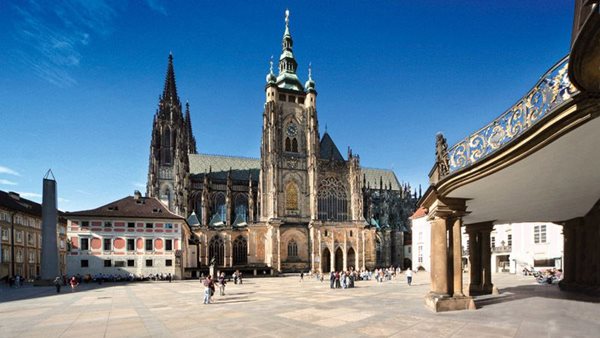
Removed from Unnamed collection
Prague Castle 
Which is the largest castle in the world? The one in Prague of course! You can wander around its courtyards, palaces, museums and garden all day long and whilst doing so, admire the overwhelming beauty of a place which has been the seat of Czech kings, emperors and presidents for a thousand years. The whole castle grounds are dominated by the monumental St. Vitus Cathedral, which is one of the most beautiful in Europe. Discover the secret of this symbol of the Czech Republic and a place which makes Prague one of the most beautiful cities in the world. http://www.czechtourism.com/c/prague-castle/
Map
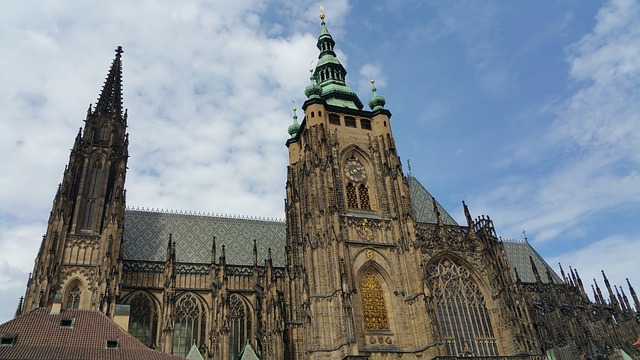
Removed from Unnamed collection
Cathedral of Saints Vitus, Wenceslas and Adalbert 
The biggest, most important, most beautiful. The Gothic St. Vitus Cathedral at Prague Castle is a place of so many superlatives. Above all, it’s the spiritual symbol of the Czech nation and the resting place of Czech history’s greatest rulers. Come and learn the story of this fascinating architectural masterpiece which is among the most important cathedrals in Europe.
Once you are standing in the heart of the cathedral you will feel a real rush of history. Massive pillars support magnificent vaulting, and everything is illuminated by the sun’s rays glinting through the beautifully decorated stained glass windows. The most important part of the cathedral is the exquisite St. Wenceslas Chapel, where the priceless Bohemian coronation jewels are stored behind seven locks. In the cathedral you will also find the tombs of saints, kings, princes and archbishops, the most important of which are the resting places of St. John of Nepomuk and King Charles IV. You can conclude your visit to the cathedral with an ascent of the top of the south tower, where you will be rewarded with an amazing panorama of one of the most beautiful cities in the world. http://www.czechtourism.com/c/prague-st-vitus-cathedral/
Map
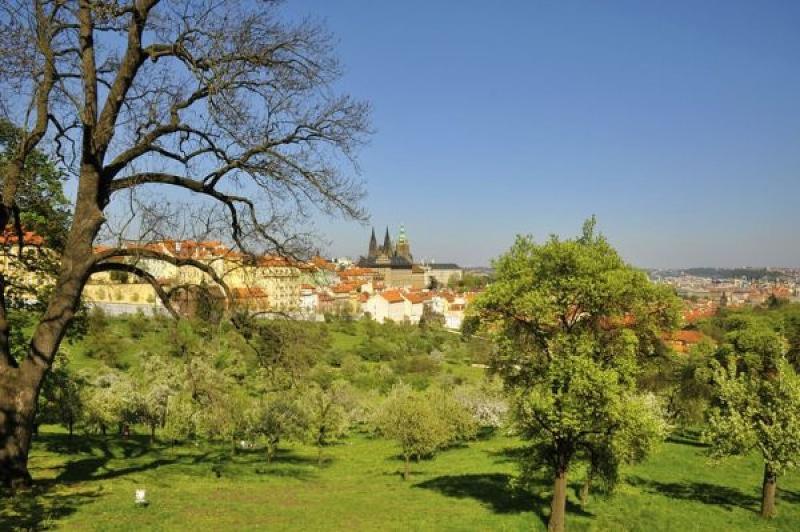
Removed from Unnamed collection
Petrin Hill 
Overlooking the glorious city of Prague is the equally beautiful Petřín Hill, one of the former vineyards of King Charles IV. This is the place to go and relax under a blooming cherry tree during a clear spring day or smell the fragrant beauties in the lovely rose garden on a lazy summer night, and it is also the perfect place to capture the wonder of Prague via your camera. It is a steep walk up Petřín, so if you wish, you can take the cool funicular up to the summer restaurant or all the way to the top of the hill. Petřín Hill also features a miniature Eiffel Tower (built for the for the 1891 Prague Exposition), Petřín Lookout Tower, one of the best observation points in Prague, a mirror maze for children and adults alike, mysterious walking paths that lead to secret gardens, fountains, a traditional Ukrainian wooden church, and even a small waterfall by the adjoining Kinsky garden. A perfect place for a day of relaxing or even a picnic, Petřín Hill is busiest on May 1st, when lovers go and kiss under cherry trees to seal their romance forever. https://www.prague-stay.com/lifestyle/review/224-petrin-hill
Map

Removed from Unnamed collection
Veveri Castle 
The castle was held in possession of various noblemen and its history is interwoven with a number of myths and legends. Today it is a venue of various cultural and social events. At the foot of the castle there is a steamboat stop. http://www.czechtourism.com/c/brno-veveri-castle/
Map
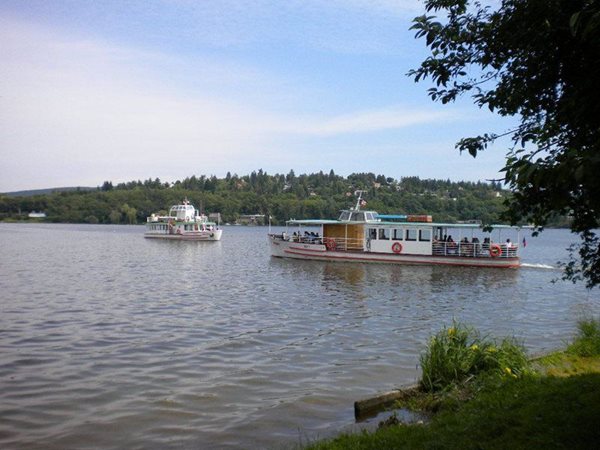
Removed from Unnamed collection
Brno Reservoir 
A popular recreational resort and an ideal place for all kinds of water sports. The banks are lined with sport facilities, restaurants, pubs and kiosks. The regular water transport line serving the route Brno - Veverská Bítýška is in operation every year from April to September. The visitors coming from the city centre can get to the reservoir by public transport. http://www.czechtourism.com/c/brno-reservoir/
Map

Removed from Unnamed collection
Moravsky Kras 
The largest and most beautiful karst area in central Europe is a place where visitors have their breath taken clean away. The main attraction here is the famous Macocha Abyss, some 138m deep and steeped in terrifying myths and legends. Without doubt the Moravian Karst is one of the natural wonders of the Czech Republic, which will wow every visitor. http://www.czechtourism.com/c/moravian-karst/
Map

Removed from Unnamed collection
Luzanky Park 
Lužánky Park was established in 1786 as one of the first public parks in Central Europe. In the middle of the park, you can visit the Renaissance Revival pavilion from 1855 by Viennese architect Ludwig Förster, which has held balls, concerts, celebrations, and various expositions over the years. Today, the building goes by the name Kasino and serves mainly as a leisure-time centre for children.
The park as we know it was created in 1840 by city gardener Antonín Šebánek. In addition to the park’s precious trees, visitors may enjoy watching colourful fish in the stream and cute piglets – a favourite attraction for the park’s youngest visitors. There’s also a playground for children to enjoy and get some energy out.
Lužánky is an ideal place for sporting as well as social activities, as locals come here to jog, play tennis, pétanque, and volleyball, exercise in an outdoor gym, or get a bite to eat at one of a number of nearby restaurants. Visitors can also use a public grill for barbecuing. https://www.gotobrno.cz/en/place/park-luzanky/
Map
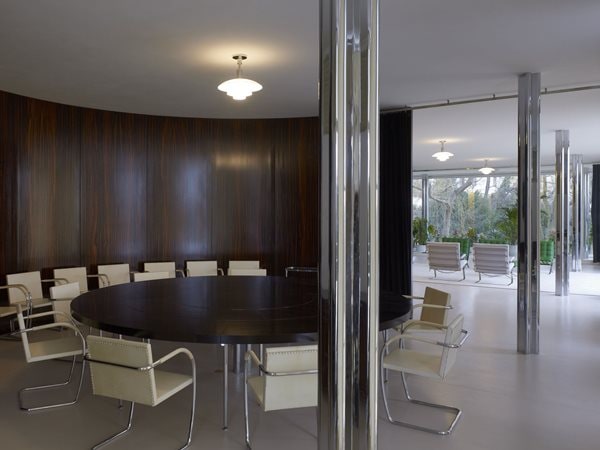
Removed from Unnamed collection
Villa Tugendhat 
Villa Tugendhat has borne witness to the birth of modern housing and also to the tragic fate of the people who lived there. This work by the famous German architect Mies van der Rohe is to this very day regarded as one of the four most important villas in the world. Thanks to its values, this gem of modern architecture has also been included in the UNESCO world heritage list. http://www.czechtourism.com/c/brno-unesco-tugendhat-villa/
Map
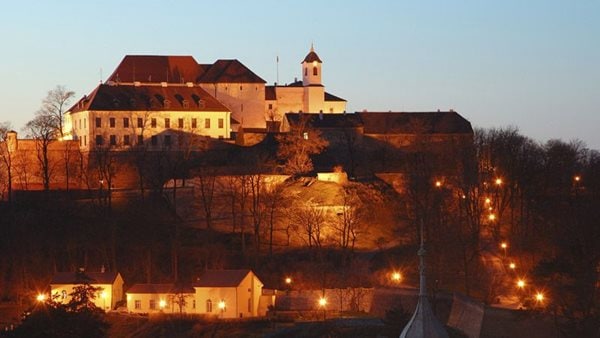
Removed from Unnamed collection
Spilberk Castle 
A prison shrouded in horrific legends, valuable historical collections, a beautiful view over the city and many cultural events held throughout the year – all of this is Špilberk Castle. One of the two most important dominant features of the Moravian capital and a place which became synonymous with the most horrific of dungeons throughout the whole of Europe is nowadays one of the most valuable monuments in Brno.
Špilberk’s importance and role changed fundamentally over the course of the centuries. This leading royal castle and seat of the Moravian margraves, gradually transformed into a monumental Baroque fortress, the toughest prison of the Austrian monarchy and later a military barracks. Nowadays it is home to Brno City Museum and one of the most important cultural centres in the city. http://www.czechtourism.com/c/spilberk-castle/
Map
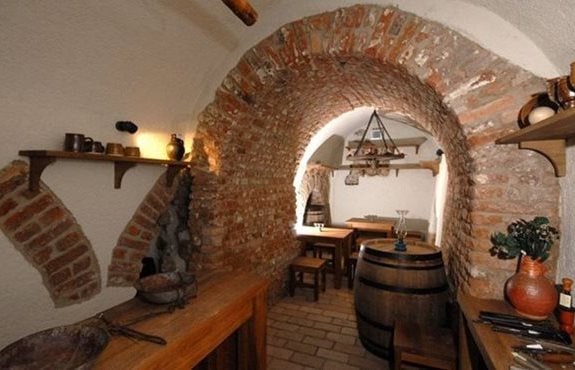
Removed from Unnamed collection
Brno underground 
Proof of the fact that the Moravian capital still has its secrets, is the newly renovated Brno underground under Zelný trh. It was only recently that a tour route was opened here for the general public, which leads under the surface of one of the oldest squares in Brno. http://www.czechtourism.com/c/brno-underground/
Map
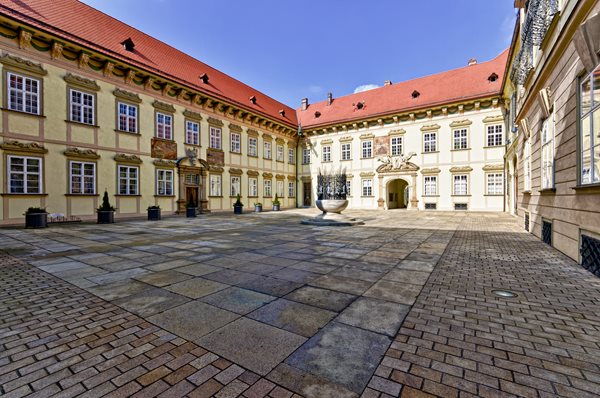
Removed from Unnamed collection
Old Town Hall in Brno 
The Brno Dragon and Brno Wheel are well-known symbols of the city and are linked with several legends. You can only see them with your own eyes in the building of the former Town Hall in the Moravian Capital near to Zelný trh. http://www.czechtourism.com/c/brno-old-town-hall/
Map
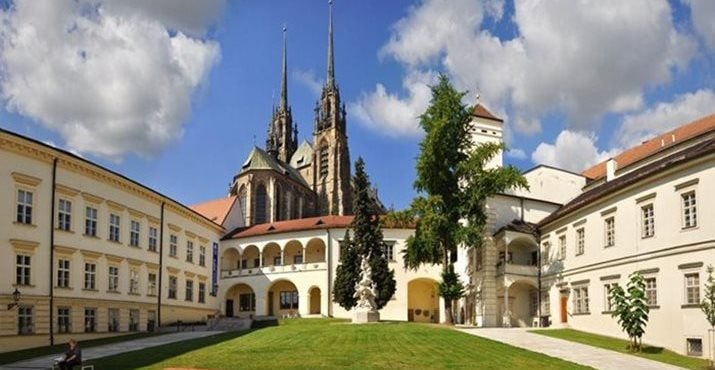
Removed from Unnamed collection
Moravian Museum 
The museum was created back in 1817 by means of an imperial decree by František I, and nowadays it contains over six million items. Take a closer look at prehistoric life in Pavilon Anthropos where you will see a life-size mammoth and all the things a prehistoric family had to face. http://www.czechtourism.com/c/brno-moravian-museum/
Map


